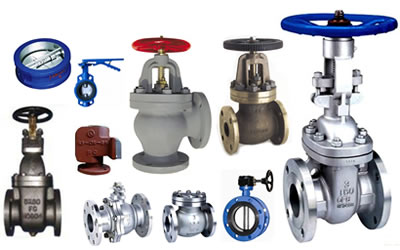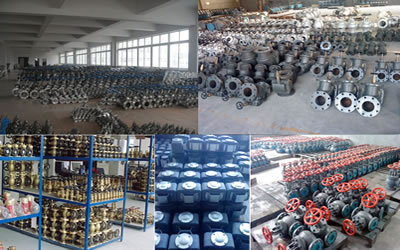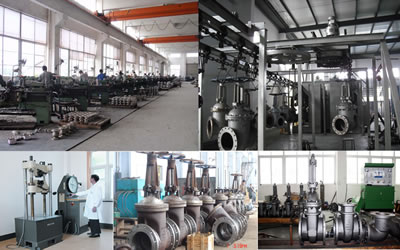Offshore shipbuilders turn to cruise to stay afloat in the downturn
Specialist shipbuilders are feeling the squeeze from the offshore industry's downturn, with low oil prices resulting in stalled projects and cancelled orders. This has prompted some companies to expand into the cruise sector. But what are they offering the cruise industry and can they successfully make the transition? Frances Marcellin reports.

As the offshore shipbuilding industry continues to deal with a depressed market, caused by falling oil prices and overcapacity, mainly due to vessel construction in Asia, offshore shipbuilding companies are fighting for survival.
The last decade has demanded many shifts in strategy, starting with the fallout from the global financial crisis in 2007 and 2008 where a severe drop in oil prices led to a major decrease in offshore vessel orders. While many companies were able to continue operating as oil prices recovered, the oil price drop in 2014 has been far more challenging to overcome, resulting in idle ships and thousands of job cuts.
An OECD report notes that in 2015 7,300 jobs were lost in Norwegian shipping companies alone, and, according to Clarksons Research, the global orderbook shrank by 25% in 2016.
VARD’s development plans for diversification
With a decrease in fresh orders, many offshore shipbuilding companies are using their expertise to break into other sectors, such as the thriving cruise industry. With a core market in offshore support and subsea vessels, specialised vessels for the offshore oil and gas industry, VARD started to develop products for the cruise industry back in 2015.
In February last year the company publicly announced its new diversification strategy in the areas of adventure (luxury cruise expedition vessels for polar and exotic environments), energy (specialised vessels for oil and gas, and emerging offshore energy industries), seafood (vessels for the fisheries and aquaculture industries) and security (vessels for securing and monitoring the seas).
“The need to diversify arose from the downturn in our core market for offshore vessels,” explains Holger Dilling, executive vice president for investor relations and business development asia at VARD, which designs and builds specialists vessels across nine shipbuilding locations in Norway, Romania, Brazil and Vietnam. “Exploration cruise vessels are a market niche that is currently experiencing a boom, which fits well with VARD’s experience and capabilities to design and build technologically advanced, high-end, highly customised ships, in the size class approximately between 100 and 200 meters.”
VARD’s diversification strategy can so far be called a success, because despite a lack of new orders from the offshore industry, VARD’s order intake for 2016 was the highest in three years. At the end of the year, VARD’s order book contained twelve more vessels than the previous year and, overall, was worth NOK 12.65 billion instead of NOK 10.23 billion.
Adventurous passengers drive shipbuilding demand
Dilling explains that VARD's new orders included six firm contracts for the design and construction of exploration cruise vessels. These include four from French luxury cruise company Ponant (announced in March 2016) and two from TUI / Hapag-Lloyd Cruises (announced in May 2016) – and in January 2017 a letter of intent for a seventh expedition cruise vessel for another international cruise company was secured.
With expedition itineraries thriving in the cruise industry – from Alaska to Antarctica and the the Arctic – demand for both basic and luxurious vessels to navigate far-flung waters has continued to increase over the last few years.
“Travelling by ship can be the best mode of transport to reach some of the more intimate and adventurous destinations, such as Antarctica, Myanmar, and the Arctic – and cruise lines are using this fact to tap into new audiences,” says Adam Coulter, UK managing editor of Cruise Critic, the world's largest online cruise resource.
Each of the ice-class expedition ships for Ponant are 131m long, can accommodate 180 passengers in 92 cabins, and include a range of luxury facilities. Currently with five ships, this will almost double Ponant’s fleet when they are delivered by 2019.
The vessels for Hapag-Lloyd Cruises are designed for cruises in the Arctic and Antarctica, as well as tropical destinations such as the Amazon. They are 138m long, can accommodate 240 passengers and include a water sports marina, modern spa and fitness areas.
“This project is fully in line with our diversification strategy to enter the expedition cruise market, realising synergies and increased cooperation with our majority owner Fincantieri,” says Roy Reite, CEO and executive director of VARD.
Ulstein sails into exploring, cruising and patrolling
Renowned for its X-Bow hull design, which eliminates slamming from head seas and improves on-board comfort, Ulstein is another offshore shipbuilding expert, which is diversifying into the cruise ship industry, among other areas.
“Based on our nearly 100 years of maritime experience, with experience gained in particular from offshore vessels in recent decades, Ulstein Group wishes to expand into new segments where we have not yet made our mark, such as exploring, cruising and patrolling,“ says Tore Ulstein, deputy CEO of Ulstein Group, who adds that there is a growing desire to explore and cruise the seas.
“Exploring, cruising and patrolling are three different segments which can all be developed on the basis of our offshore experience,” he adds. “They all belong to the same design family and can share cross-conceptual graphical elements such as vertical windows on parts of the bridge, accumulation and storage of renewable energy, and alternative materials.”
The X-Bow factor
Ulstein Group first presented illustrations of cruise ship designs based on the X-Bow hull line design around two years ago and recently presented a portfolio of both X-Bow and conventional vessel designs ranging from 100m to 185m in length.
The company currently has a newbuild order book consisting of large passenger ferries, yachts and vessels operating in the renewables sector, as well as an upgrade to expedition cruise vessel the Sea Adventurer, owned by Adventurers Partner and operated by Quark Expeditions. This will include renovations to the ship's interior, technical upgrades, such as the replacement of main engines and gears, as well as the addition of new passenger cabins.
Ulstein has also committed to provide a design and equipment package to SunStone Ships, a Florida based passenger vessel tonnage provider, and China Merchants Industry Holdings, on the construction of four expedition cruise vessels. There is an option for a further six, which also sees Finnish contractor Makinen responsible for cabin assembly and all interior spaces.
These vessels will feature X-bow, a hull design patented by Ulstein, that is designed to reduce fuel costs, improve safety and make life on board more comfortable for passengers, especially in rough seas.
“For generations, we have delivered ship designs to service oil and gas installations in the world’s harshest sea areas and the knowledge of how the weather can impact the vessel is of great value when developing designs and solutions for the cruise industry,” explains Trond Skodjevaag Boe, sales manager at Ulstein Verft. “The X-Bow hull cuts through the waves and with a soft entry into the sea, the slamming will be eliminated. This means that the abrupt stops, noise and vibrations that can be experienced on other types of vessels, are minimised and negligible on these vessels.”
Thriving cruise market set to continue
While offshore shipbuilding companies battle against the storm from the oil and gas industry downturn, it is widely believed that the oil price has recovered from its lowest point.
Yet while the industry is divided on what the timing of the market’s upturn may be, those diversifying into new areas, such as expedition vessels in the cruise industry, are far more likely to experience calmer waters and a growth of their order books.
“The market for this type of vessel is still very active, so there are likely to be more opportunities going forward,” concludes Dilling.




